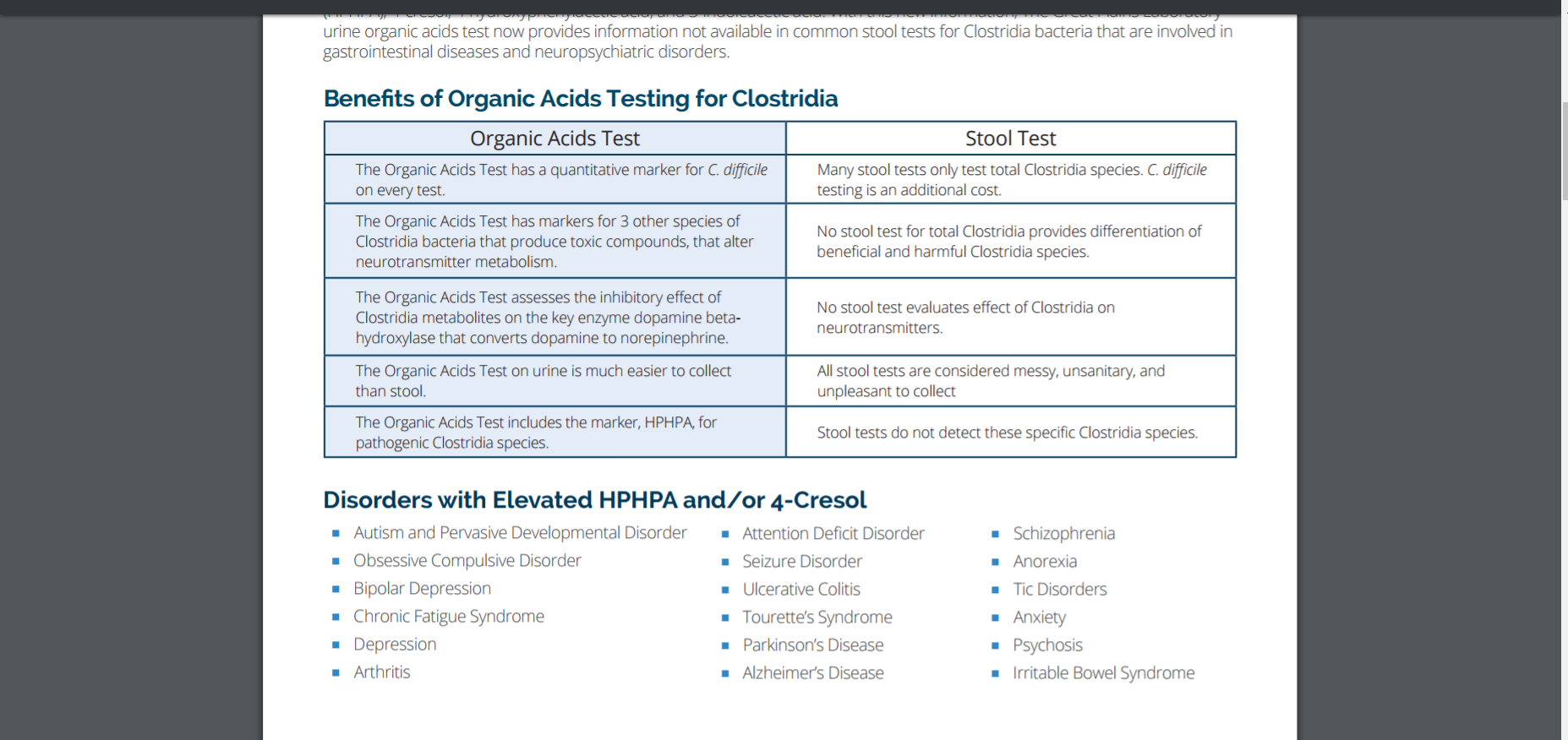Clostridia bacteria, in its various strains, releases a very potent neurotoxin. A neurotoxin alone or in combination with others can lead to neurological dysfunction including seizure disorders. Neurotoxins stimulate the overproduction of glutamate. Extracellular glutamate can create neuronal damage, resulting in fragmented myelin sheath (reduced fatty acid protection) and a pronation to “neuron excitability”, a.k.a. seizures.
Hundreds of studies have been conducted on the toxicities of clostridium bacteria and their impact on health. Only a dozen or so have assessed for the impact on neurological symptoms. Here are a couple.
“Intravenous injection in mice with the toxin caused seizure and excited hippocampal neurons. “
Regardless of the limited research, in my practice, I’ve discovered that when we remove the infections, we see an improvement in seizure activity and in some cases, a complete cessation of seizures.
An organic acids test through Great Plains Laboratory is the only functional lab I’m aware of that tests for four different strains of Clostridia, obtained through a urine sample. Unlike blood, organic acids found in urine are 100 times their concentration in blood. In other words, a urine sample is the best possible means to detect clostridia strains. This may be why a stool analysis does not reveal that infection(s) are present.
I see these markers elevated often in my client lab results. 
If you have conducted a comprehensive stool analysis, it’s very possible it did not detect an infection that may be present. 
Please refer to the above image, specifically disorders associated with two of the strains of clostridia detected in the Organic Acids test. “Seizure disorder” is included in this list.
Among bacterial infections the organic acids test can also report indications for SIBO (small intestinal bacterial overgrowth); ‘road blocks’ in fatty acid oxidation, carbohydrate metabolism; deficiencies in glutathione (the major antioxidant); presence of oxidative stress; neurotransmitter imbalances; nutritional deficiencies and potential inborn errors of metabolism. It’s an excellent first attempt at functional assessment, can be conducted in the privacy of your own home and is not very costly. For more information please visit here.
Bringing much light,
Lynn


